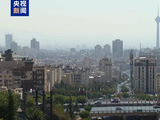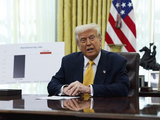Japan's Political Shift; U.S.-South Korea Diplomatic Dance; Beijing's Health Push; Geopolitical Tensions in Israel and Ukraine; Gold's Surge; China's Dual Narratives
Japan's Political Turmoil: The Aftermath of Suga Yoshihide's Resignation
Recent events show a significant political shift in Japan following the resignation of Prime Minister Suga Yoshihide. United Daily News highlights the critical factors influencing Suga's departure, including public support, party alignment, and relations with opposition parties. The outlet suggests that the Liberal Democratic Party (LDP) will need to restore public trust and redefine its political stance, especially after losing conservative votes to opposition parties.
In contrast, Sina emphasizes the LDP's "double minority" predicament, failing to secure a majority in both houses of the Diet. This situation has led to increased calls within the party for Suga's resignation and an early leadership election. The narrative here suggests an urgent need for the LDP to find a leader who can navigate this complex landscape.
CCTV provides a detailed account of the internal pressures that led to Suga's resignation, focusing on the party's internal divisions and the strategic decision to step down to prevent further fragmentation. The report underscores the challenges facing the new leader, including domestic economic issues and international trade negotiations.
Meanwhile, another CCTV article delves into the implications of Suga's resignation on Japan's political stage, describing the LDP's leadership as a "hot potato" due to the intense political rivalry and uncertainty about who will succeed him.
Tencent lists potential successors, including notable figures such as Taro Kono and Shigeru Ishiba, highlighting the diverse backgrounds and political ideologies of these candidates. The analysis suggests that the new leader will face significant challenges, including Japan's economic recovery and international relations, particularly with China and the US.
These developments indicate a period of instability and uncertainty in Japan's political landscape. Each publication offers a unique perspective, reflecting their editorial intentions and audience focus. United Daily News and Tencent focus on potential successors and the future direction of Japan's politics, while Sina and CCTV emphasize the internal party dynamics and strategic decisions surrounding Suga's resignation.
U.S.-South Korea Relations Under Scrutiny Amidst Immigration and Trade Developments
Recent events show heightened tensions between the U.S. and South Korea following the U.S. Immigration and Customs Enforcement's raid on a battery factory operated by South Korean companies Hyundai and LG in Georgia. United Daily News reports that about 300 South Korean unauthorized immigrants were detained, with plans for their repatriation by South Korean chartered flights. President Biden's comments suggested a need for training American workers in battery technology, but he emphasized that the raid will not impact U.S.-South Korea relations, highlighting a recent trade agreement between the two nations.
These developments indicate a complex interplay of labor, trade, and diplomatic relations. Another article from United Daily News briefly reiterates the raid and mentions potential for further scrutiny on other enterprises, suggesting an ongoing enforcement focus.
Meanwhile, Sina News highlights the strategic importance of upcoming diplomatic engagements, including President Biden's anticipated visit to South Korea for the APEC summit, which could serve as a platform for U.S.-China-South Korea interactions. The report underscores the U.S.'s aim to expand economic cooperation, hinting at potential discussions with North Korean leadership as well.
The news highlights a multifaceted narrative where U.S. enforcement actions on immigration are juxtaposed with broader diplomatic and trade agendas. These stories collectively illustrate the balancing act in maintaining robust bilateral ties amidst domestic policy challenges and international diplomatic opportunities.
Beijing's Free HPV Vaccination Initiative for Schoolgirls: A Comprehensive Overview
Recent events show that Beijing has launched a significant public health initiative, offering free HPV vaccinations to first-year female students. According to a report by Tencent, the city has mobilized over 440 vaccination clinics to provide this service, aiming to curb the incidence of cervical cancer. The article highlights the logistical details, such as the need for eligible individuals to bring identification and vaccination records, and it emphasizes the safety and efficacy of the vaccine, noting that adverse reactions are typically mild.
The news highlights the strategic choice of targeting schoolgirls for this program, as explained in a separate piece by Tencent. This decision is driven by the high incidence of cervical cancer globally, with China reporting approximately 150,000 new cases annually. The article explores the rationale behind offering free vaccinations despite high willingness among women to pay for them, suggesting a government commitment to public health and preventive care. Furthermore, it discusses parental considerations between opting for the free two-valent vaccine and the more comprehensive nine-valent version.
These developments indicate a concerted effort by Beijing to enhance public health infrastructure, with the initiative framed as part of a broader campaign to eliminate cervical cancer. The reports from Tencent offer a detailed view of the program's implementation and underline the government's proactive stance in addressing women's health issues. While both articles provide similar information, the second article adds depth by examining the policy's implications and parental decision-making processes.
Escalation at Ramon Airport: Aerial Incursions and Geopolitical Tensions
Recent events highlight a significant breach at Israel's Ramon International Airport, as reported by Liberty Times. On September 7th, a Houthi rebel-launched drone reportedly penetrated Israel's multi-layered air defense system, successfully striking near the airport and causing injuries to one individual. This incident, seen as a direct retaliation for the recent 'decapitation strike' on Houthi leadership, underscores the escalating conflict and the increasing sophistication of drone warfare.
In contrast, CCTV offers a more restrained narrative, focusing on the immediate aftermath of the attack. Their report emphasizes the presence of thick smoke and the swift response of security forces at the scene. CCTV notes that the drone did not trigger any alarms before the explosion, which resulted in eight injuries and induced acute anxiety symptoms in several individuals. The airport's temporary closure and investigation into the failure to intercept the drone are highlighted.
These developments indicate differing perspectives on the incident. Liberty Times frames it as part of a broader retaliatory narrative, emphasizing the symbolic and strategic implications of the attack. In contrast, CCTV's coverage centers on the immediate impact and response, potentially aiming to downplay the strategic success of the Houthi's operation. Both narratives reflect the broader geopolitical tensions in the region, with each source tailoring its focus to align with national interests and audience expectations.
Escalating Tensions: The U.S.-Russia Sanctions and Airstrikes in Ukraine
Recent events show a significant escalation in the geopolitical landscape as the U.S. prepares to impose a second phase of sanctions on Russia. According to Sina, President Trump confirmed preparations for these sanctions but has not detailed the specific actions or content of the so-called 'second-phase sanctions.' This indicates a strategic ambiguity, perhaps aimed at maintaining leverage over Russia.
Meanwhile, United Daily News highlights an intense Russian airstrike on Ukraine, marking the largest since the conflict began. The attack involved 810 drones, missiles, and cruise missiles, even targeting Ukraine's government building for the first time. This news underscores the severe escalation in military engagements, leading to significant casualties and damage.
In the broader narrative, United Daily News also notes the criticism from Ukraine's President Zelensky, who suggests that Trump’s approach has emboldened Putin. He emphasizes the need for increased pressure on Russia, particularly from the U.S., to counteract these aggressive maneuvers. Zelensky's comments reflect a deep frustration with the current diplomatic dynamics, suggesting that the lack of firm U.S. action may be perceived as a weakness by Russia.
These developments indicate a complex interplay of military action and diplomatic posturing, with the U.S. and Russia locked in a tense standoff that significantly impacts Ukraine. The contrasting narratives between Sina and United Daily News illustrate different focal points: Sina reports on the diplomatic ambiguity of U.S. sanctions, while United Daily News focuses on the immediate military and strategic consequences in Ukraine.
Analyzing the Surge in Gold Prices and Stock Market Trends
Recent events show a notable increase in international gold prices, driven by unexpected U.S. non-farm payroll data. According to qq.com, gold prices have surged to $3650 and are on track to challenge the $4000 mark. The weaker than expected U.S. job growth figures have led to a significant drop in the U.S. dollar index, bolstering gold's appeal as a safe haven asset.
These developments indicate that the market's anticipation of a new cycle of Federal Reserve interest rate cuts could further benefit gold prices. The article highlights that, historically, there is an inverse relationship between the dollar and gold; when the dollar falls, gold typically rises. This dynamic is evident as investors adjust their expectations for future interest rate policies.
The news highlights the ongoing bull market in gold, which has been building since 2016, and the potential for further gains if the Federal Reserve's credibility is perceived to be weakening. The article suggests that gold could reach $5000 per ounce if these conditions persist.
It appears that while gold is gaining momentum, the Chinese A-share market is also poised for growth. The analysis from qq.com suggests that the A-share market's bull run is just beginning, with potential to break through the 4000-point barrier. Despite current resistance levels from historical highs in 2007 and 2015, there is optimism for a breakout.
Conversely, a brief mention in another qq.com article touches on a similar theme, but adds little new information to the discussion. It reinforces the notion that both gold and the stock market are benefiting from the current economic climate.
Overall, the narrative from these publications suggests a cautiously optimistic outlook for both gold and Chinese stocks, with an emphasis on the broader economic implications of U.S. monetary policy shifts.
Contrasting Narratives: Heroism and Corporate Challenges in China
The narrative surrounding historical heroism and contemporary corporate challenges in China is vividly depicted through recent articles from Sina and Tencent.
Sina highlights a poignant historical episode, emphasizing the bravery of Chinese fishermen during World War II. The article recounts how, in 1942, fishermen risked their lives to save British soldiers from a Japanese ship, an event that deeply moved Chinese President Xi Jinping. This act of heroism is celebrated as a symbol of enduring Sino-British friendship, with recent commemorations and memorials reinforcing this narrative. Xi's personal engagement, as shown by his correspondence and directives to honor the fishermen, reflects a strategic intent to underscore China's historical role as a courageous and benevolent actor on the global stage.
In contrast, Tencent's coverage shifts focus to the contemporary corporate sphere, detailing the financial tribulations of Sun Hongbin, a prominent Chinese businessman. After a period of obscurity, Sun re-emerges amidst the backdrop of massive debt restructuring efforts by his company, Rongchuang. The article paints a picture of resilience and strategic maneuvering, as Sun navigates the complex landscape of corporate finance, aiming to stabilize his company's fortunes. Despite the daunting challenges, including significant debt and market volatility, Sun's public appearances and statements convey a message of cautious optimism.
While Sina's article aims to evoke national pride and historical continuity, Tencent's narrative is more pragmatic, reflecting the harsh realities of modern business environments. Both pieces, however, underscore a common theme of resilience, whether in the face of wartime peril or economic adversity. The differing narratives highlight how Chinese media can simultaneously celebrate past glories while grappling with present challenges, offering a comprehensive view of China's evolving identity on the world stage.



